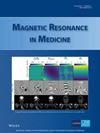Accelerated EPR imaging using deep learning denoising
Abstract
Purpose
Trityl OXO71-based pulse electron paramagnetic resonance imaging (EPRI) is an excellent technique to obtain partial pressure of oxygen (pO2) maps in tissues. In this study, we used deep learning techniques to denoise 3D EPR amplitude and pO2 maps.
Methods
All experiments were performed using a 25 mT EPR imager, JIVA-25®. The MONAI implementation of four neural networks (autoencoder, Attention UNet, UNETR, and UNet) was tested, and the best model (UNet) was then enhanced with joint bilateral filters (JBF). The training dataset was comprised of 227 3D images (56 in vivo and 171 in vitro), 159 images for training, 45 for validation, and 23 for testing. UNet with 1, 2, and 3 JBF layers was tested to improve image SNR, focusing on multiscale structural similarity index measure and edge sensitivity preservation. The trained algorithm was tested using acquisitions with 15, 30, and 150 averages in vitro with a sealed deoxygenated OXO71 phantom and in vivo with fibrosarcoma tumors grown in a hind leg of C3H mice.
Results
We demonstrate that UNet with 2 JBF layers (UNet+JBF2) provides the best outcome. We demonstrate that using the UNet+JBF2 model, the SNR of 15-shot amplitude maps provides higher SNR compared to 150-shot pre-filter maps, both in phantoms and in tumors, therefore, allowing 10-fold accelerated imaging. We demonstrate that the trained algorithm improves SNR in pO2 maps.
Conclusions
We demonstrate the application of deep learning techniques to EPRI denoising. Higher SNR will bring the EPRI technique one step closer to clinics.

 求助内容:
求助内容: 应助结果提醒方式:
应助结果提醒方式:


